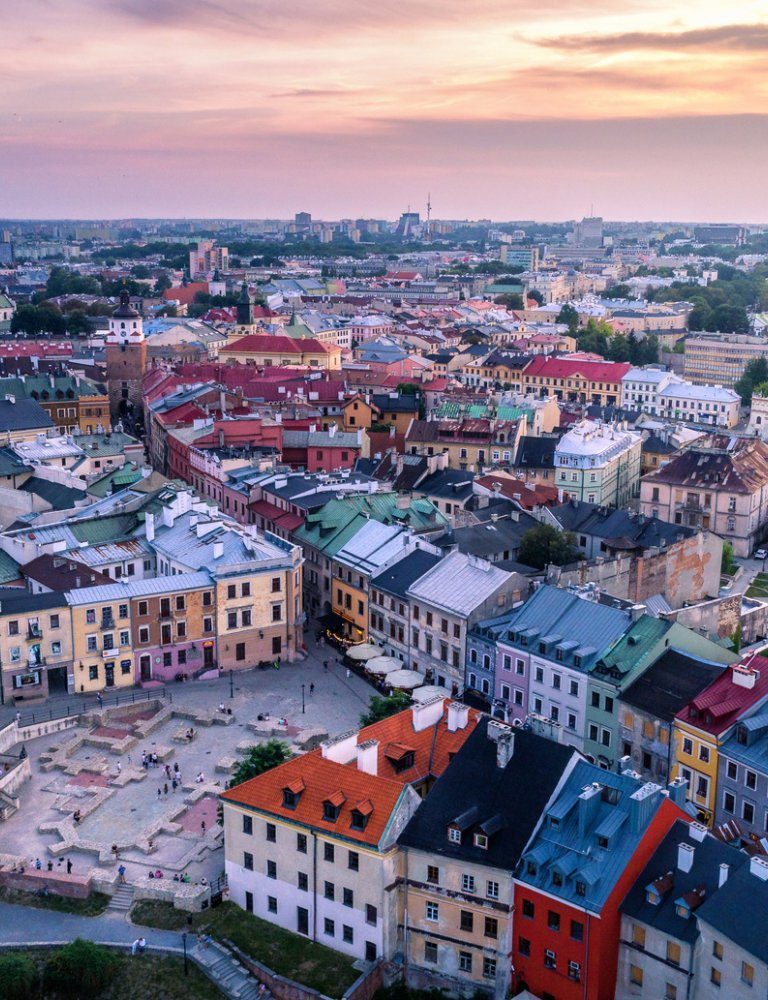



Lubelskie Podziemia (Lublin Underground) is a 280-meter-long tourist route running beneath the Market Square and the buildings of the Old Town. The route was created by connecting several of the numerous old town cellars, with a history dating back to the early 16th century, a time when Lublin reached its greatest prosperity. These cellars were partly connected by corridors, forming an underground labyrinth beneath the city.
The Lubelska Trasa Podziemna (Lublin Underground Route) is both a tourist and educational experience. The tour through the historic cellars, which is exciting on its own, also serves as a journey through time, allowing visitors to discover the city's past. Models depicting the spatial development of Lublin from the 8th century AD, through the Middle Ages, and the 16th century, are on display.
The underground route also features two models depicting the old panoramas of the city: the oldest view from the 16th century and the most famous view from the first half of the 17th century. The highlight of the underground tour is the moving model of the Great Fire of Lublin (1719), enhanced with light and sound. This visualization was created based on a painting in the Dominican church (which commemorates the fire) and archival written sources.
An additional attraction of the underground is the Monday reenactments. The Lubelska Trasa Podziemna connects two important places in Lublin: it starts at the former town hall, the center of secular power, and ends at the remains of the St. Michael Archangel Church, which once was the heart of the city's religious life.
